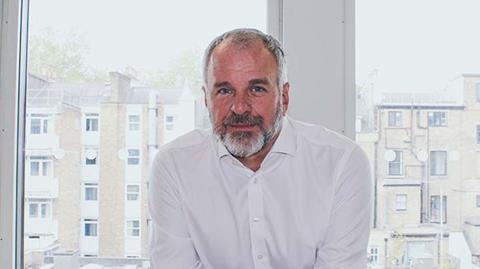
Signatories of the Mansion House Compact in the UK have highlighted cost as the biggest challenge to increasing investment in UK private equity.
Back in July Jeremy Hunt, the chancellor of the exchequer, announced plans to unlock up to £75bn of additional investment from defined contribution (DC) and Local Government Pension Schemes (LGPS) to help grow the UK economy and deliver benefits to savers.
As part of this, he launched a Mansion House Compact which saw nine signatories – Aviva, Scottish Widows, Legal & General, Aegon, Phoenix, NEST, Smart Pension, M&G and Mercer – commit to allocating at least 5% of their default funds to unlisted equities by 2030.
Currently, UK DC schemes’ investment in domestic unlisted equities is under 1%.
On 25 October, the nine early signatories met at a major pensions summit in London, joined by the new signatory Aon, the Government’s Actuary’s Department, The Pension Regulator’s CEO Nausicaa Delfas, the chancellor and other stakeholders.
The aim of the summit was to explore practical approaches to accelerating investment in unlisted equities to boost returns for UK savers.
Aon
Aon joined the Compact four months after it was first set up. Joanna Sharples, Aon’s partner and member of the UK DC investment committee, told IPE that joining the Compact was “quite a big step”.
“We wanted to take a bit more time really to evaluate what it meant. It was really important to talk to our clients and get feedback,” she said.
Sharples added that over the last few months, Aon has talked to and educated clients on private assets and unlisted equity.
“We wanted to gauge what they felt about it, because it’d be quite hard for us to do it if our clients were so totally aghast to that prospect,” she added.
However, Sharples said the feedback received from clients had been “really positive”. She expects others out there like Aon to be looking at joining the Compact and wanting to take more time to evaluate their options.

Cost
Summit attendees discussed various challenges preventing them or the industry from boosting investment in UK growth, however, the most common challenge raised was cost.
Sharples said: “I think one of the biggest challenges, and it’s always the elephant in the room, is […] cost.
“I’d always put it in terms of the existing clients versus new clients but the DC market with the government’s consolidation agenda is fiercely competitive at the moment.”
She added: “That is one of the big challenges I see in the next few years. It’s about who’s brave enough to take a more expensive strategy to the market and compete for that. It’s about who will make it through that shortlist with the more expensive strategy to have a chance of competing.”
Peter Glancy, head of policy at Scottish Widows, agreed that the “race to the bottom on price” was a barrier to achieving the Compact’s goal.
“The government and regulators have downward pressure on price. The employee benefit consultants who primarily assess value and price recommend people move from one scheme or master trust to another based on price, and people who make decisions within employers are also used to constantly just beating up all of their suppliers on price,” he explained.
Glancy said nobody wants to pay “that little bit extra” for additional portfolio diversification.
Operational costs
According to Jesal Mistry, senior DC investment director at Legal & General Investment Management, private market investments are more expensive to operate, more expensive to source and more expensive to run.
“Costs in DC arrangements have been driven down to their lowest point, so any inclusion of private markets is likely to mean an increase in cost for DC savers,” he said. “It will be critical to get clients, trustees and members to recognise the value that private markets can provide and buy into the benefits.”
Operationally, Mistry said DC schemes are used to daily pricing. However, he said: “To move away from that type of structure can be quite challenging.”
He added: “Even though we have the Financial Conduct Authority’s framework around Long Term Asset Funds which has been fantastic in supporting access to illiquids in DC, operationally they are more challenging and don’t fit into daily pricing.”

Paul Bucksey, Smart Pension’s chief investment officer, said that currently there is a cost fixation in the market, adding that from the supply side, there is a willingness to invest in some of these less liquid investments but the challenge is that some providers find it easier than others.
For example, Smart has an “extremely efficient admin platform” on which the master trust sits and it operates in the Middle East, Ireland and other parts of the world, according to Bucksey.
He added that the key advantage of that is that the platform is highly automated and therefore cost effective. “Our admin fees are lower than a lot of our peers.”
He said: “We’ve got a great advantage – it’s a bit easier for us to have a clear pathway to how we’re going to allocate to some of these more expensive asset classes without the need to put up our fees.”
The problem is on the demand side, Bucksey said.
Value for Money
But in order to maximise net returns, Bucksey said that it is important to “really shake the tree from an investment return perspective”.
He added that this is helped by the Value for Money framework set up by the Department of Work and Pensions which is expected to shine a light on performance.
“Employers make the final decision and they are fixated on price. They need to be educated around investment growth and customer outcomes”
Peter Glancy, head of policy at Scottish Widows
Sharples agreed that it is important that the industry changes its mindset to look at the value and not the cost.
“When you look at other markets or other industries, usually consumers are prepared to pay more to get a better quality product. It should be the same here,” she said.
However, she believes that cost-focused mentality has “pervaded quite a lot” and people only look at the price. She said the danger of that is that “you will actually forego better returns for members”.
In her first speech as CEO in May, Delfas called on the pensions industry to focus more on value, not cost.
What’s next?
Going forward education is key, according to Scottish Widows’ Glancy. “Employers make the final decision and they are fixated on price. They need to be educated around investment growth and customer outcomes.”
He added: “Value for money may change the mindsets of customers and their advisors but unless customers and advisors come along and say ‘we want something that has greater diversity and higher potential investment upside and we are happy to pay more for it’, there’s not a lot we can do. This is not our money.”
Read the digital edition of IPE’s latest magazine






